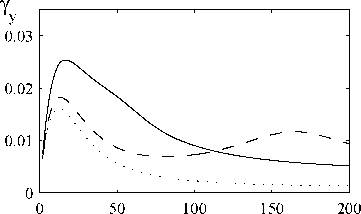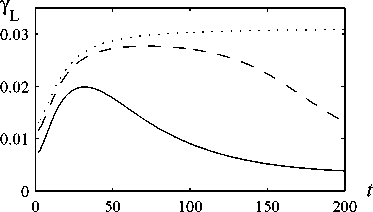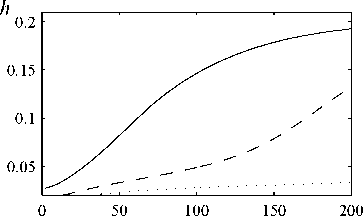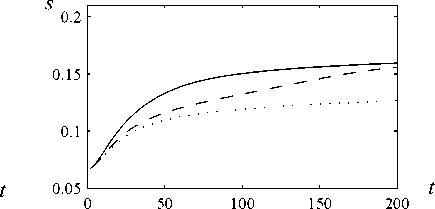expands in the first phase at relatively high rates above 2.5 percent. Because of the subsistence
effect parents want to have larger families initially and population growth rises. Yet, after
about 30 years survival probabilities are sufficiently good so that the effect of quality-quantity
substitution becomes dominating and population growth begins to decline. This phase is also
characterized by increasing but eventually stabilizing savings rates and education levels. After
about 100 years the demo-economic transition comes to its end and the system stabilizes along
a balanced growth path.
Figure 5: Patterns of Development: Hills, Plateaus, and Valleys




Parameters as for Figure 4 and gA = 0.005, β = 1/3, and α(1 - β) = 0.56.
Now consider an unfavorably located country described by b = 0.0025 and represented by
dashed lines. This country begins also to grow economically after the technology shock but at
a lower rate than the favorably located one. Income growth prospects are increasingly absorbed
by population growth and after about 20 years of promising development economic growth
begins to decline. After reaching a low level of economic growth below one percent - observed
together with perpetually high population growth - almost nothing happens for about 50 years
and some observers (of only this time window) may think that the country has stabilized at a
low-level equilibrium trap. In fact, the economy develops, albeit exceedingly slow. With slightly
but continuously improving child survival rates and thus increasing human capital expenditure,
18
More intriguing information
1. On Dictatorship, Economic Development and Stability2. The name is absent
3. Urban Green Space Policies: Performance and Success Conditions in European Cities
4. The name is absent
5. AMINO ACIDS SEQUENCE ANALYSIS ON COLLAGEN
6. The name is absent
7. The role of statin drugs in combating cardiovascular diseases
8. On s-additive robust representation of convex risk measures for unbounded financial positions in the presence of uncertainty about the market model
9. A Rare Case Of Fallopian Tube Cancer
10. The name is absent